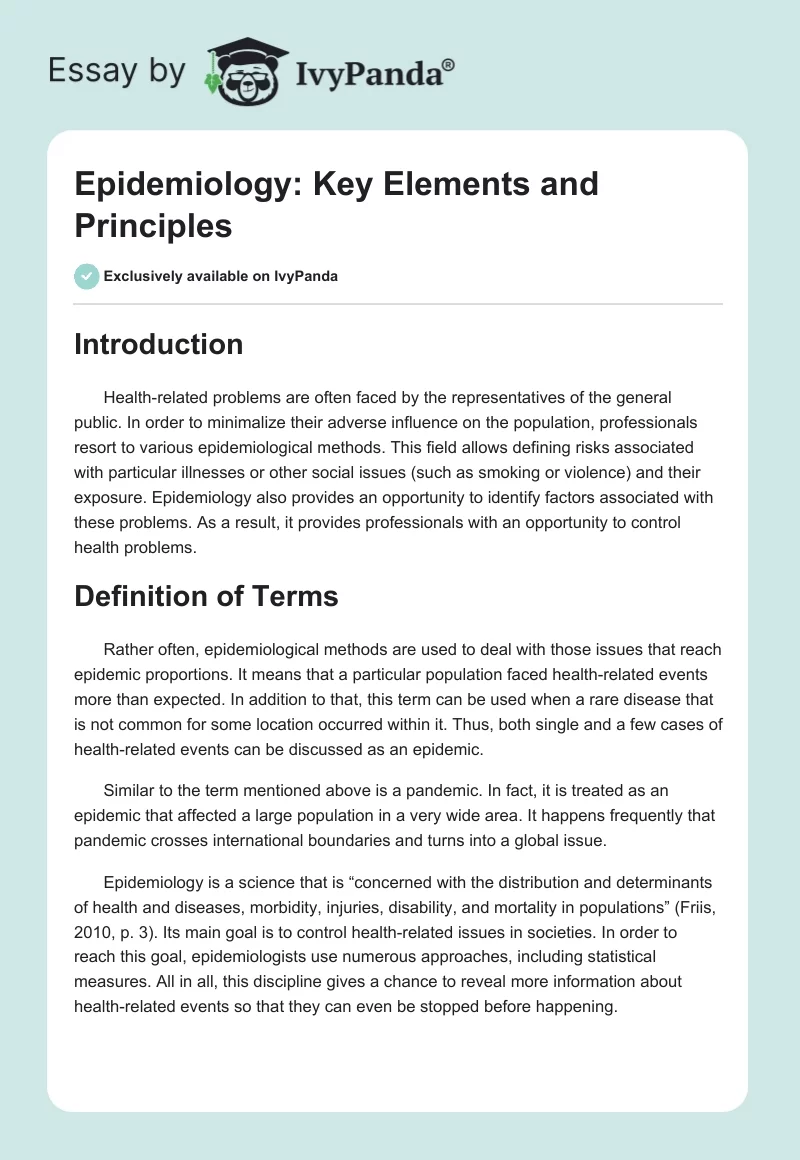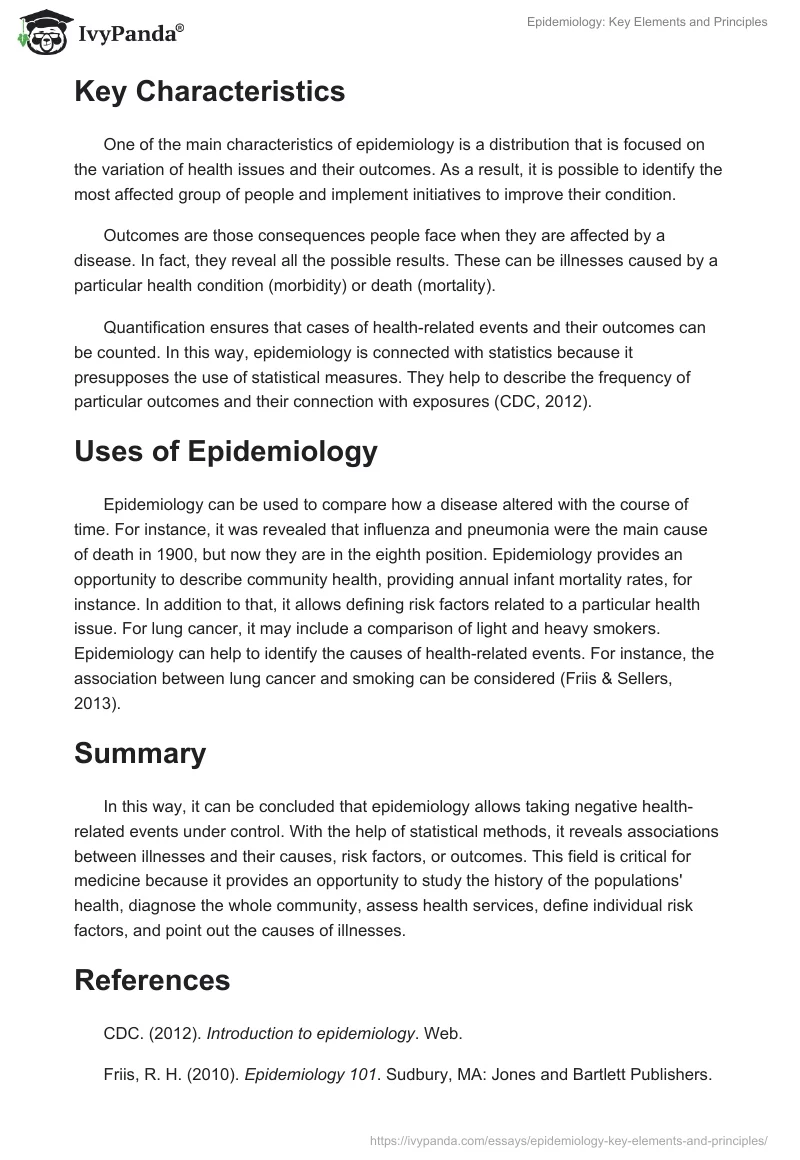Introduction
Health-related problems are often faced by the representatives of the general public. In order to minimalize their adverse influence on the population, professionals resort to various epidemiological methods. This field allows defining risks associated with particular illnesses or other social issues (such as smoking or violence) and their exposure. Epidemiology also provides an opportunity to identify factors associated with these problems. As a result, it provides professionals with an opportunity to control health problems.
Definition of Terms
Rather often, epidemiological methods are used to deal with those issues that reach epidemic proportions. It means that a particular population faced health-related events more than expected. In addition to that, this term can be used when a rare disease that is not common for some location occurred within it. Thus, both single and a few cases of health-related events can be discussed as an epidemic.
Similar to the term mentioned above is a pandemic. In fact, it is treated as an epidemic that affected a large population in a very wide area. It happens frequently that pandemic crosses international boundaries and turns into a global issue.
Epidemiology is a science that is “concerned with the distribution and determinants of health and diseases, morbidity, injuries, disability, and mortality in populations” (Friis, 2010, p. 3). Its main goal is to control health-related issues in societies. In order to reach this goal, epidemiologists use numerous approaches, including statistical measures. All in all, this discipline gives a chance to reveal more information about health-related events so that they can even be stopped before happening.
Key Characteristics
One of the main characteristics of epidemiology is a distribution that is focused on the variation of health issues and their outcomes. As a result, it is possible to identify the most affected group of people and implement initiatives to improve their condition.
Outcomes are those consequences people face when they are affected by a disease. In fact, they reveal all the possible results. These can be illnesses caused by a particular health condition (morbidity) or death (mortality).
Quantification ensures that cases of health-related events and their outcomes can be counted. In this way, epidemiology is connected with statistics because it presupposes the use of statistical measures. They help to describe the frequency of particular outcomes and their connection with exposures (CDC, 2012).
Uses of Epidemiology
Epidemiology can be used to compare how a disease altered with the course of time. For instance, it was revealed that influenza and pneumonia were the main cause of death in 1900, but now they are in the eighth position. Epidemiology provides an opportunity to describe community health, providing annual infant mortality rates, for instance. In addition to that, it allows defining risk factors related to a particular health issue. For lung cancer, it may include a comparison of light and heavy smokers. Epidemiology can help to identify the causes of health-related events. For instance, the association between lung cancer and smoking can be considered (Friis & Sellers, 2013).
Summary
In this way, it can be concluded that epidemiology allows taking negative health-related events under control. With the help of statistical methods, it reveals associations between illnesses and their causes, risk factors, or outcomes. This field is critical for medicine because it provides an opportunity to study the history of the populations’ health, diagnose the whole community, assess health services, define individual risk factors, and point out the causes of illnesses.
References
CDC. (2012). Introduction to epidemiology. Web.
Friis, R. H. (2010). Epidemiology 101. Sudbury, MA: Jones and Bartlett Publishers.
Friis, R., & Sellers, T. (2013). Epidemiology for public health practice. Burlington, MA: Jones & Bartlett Publishers.


